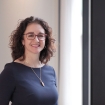
Going Circular - overview
Going Circular - Why should a services firm be concerned
Transcript
At PwC we are going circular, and adopting the principles of the circular economy. But what does that mean? Basically at its heart the circular economy is on in which materials are kept in circulation for as long as possible. Allowing them to be used again and again.
Circular solutions start on the drawing board. Redesigning products so that they use fewer materials and last longer. Are easy to maintain so that they can be refurbished for resale and reuse. So that they can be remanufactured to replace or enhance components and keep them current. Or, when there are no other options for them, to take them apart for recovery and recycling of all the materials inside.
Ultimately, the circular economy is about rethinking everything, including business models themselves so that we can reduce consumption. It is a clever idea as it not only reduces the amount of raw materials needed for a growing global population to live vibrant healthy lives but can also reduce carbon emissions and water use during the production of the goods we all buy. But, it will only happen if every business plays its part. Even if we think that our individual footprint is not big enough to matter.
A first step is to reduce waste and eliminate all landfill, something that we did back in 2012. Then you can move to recycling and reusing as much of your waste as possible. We have set a target to achieve 100% recycling on our way towards fully circular solutions. We know it is going to be hard to reach but the absolute nature of the goal is helping us reappraise everything we use in our business.
We no longer just focus on our used paper and recycled glass, metal and plastics. We are also composting our food waste, refurbishing and reselling our used laptops and mobile phones. We have substituted our disposable coffee cups with compostable ones, so we can recycle those too and we donate our unwanted office furniture to worthy causes. We have even introduced a take back programme for our uniforms, worn by suppliers based in our offices to divert these textiles away from landfill.
So far we are recycling or reusing over 85% of our waste generating over £500,000 a year in additional revenues for the firm. None of these switches are difficult to achieve, and none of them are costly and in the process you gain insights into how products you buy could be redesigned for circularity.
Why do we do it? Mostly this is about doing the right thing, and reducing the environmental impact of our business but it is also because we like to pioneer new more sustainable ways of working to show that they are possible and to share our lessons with others, helping to accelerate change at a market level.
So, if you are a services company, and you are struggling to work out how much waste you have, to benchmark your performance or set targets. To understand the costs associated with better resource management, or to build a business case for going circular, visit our website for facts, figures and tips that could help get you started.
Contact us













